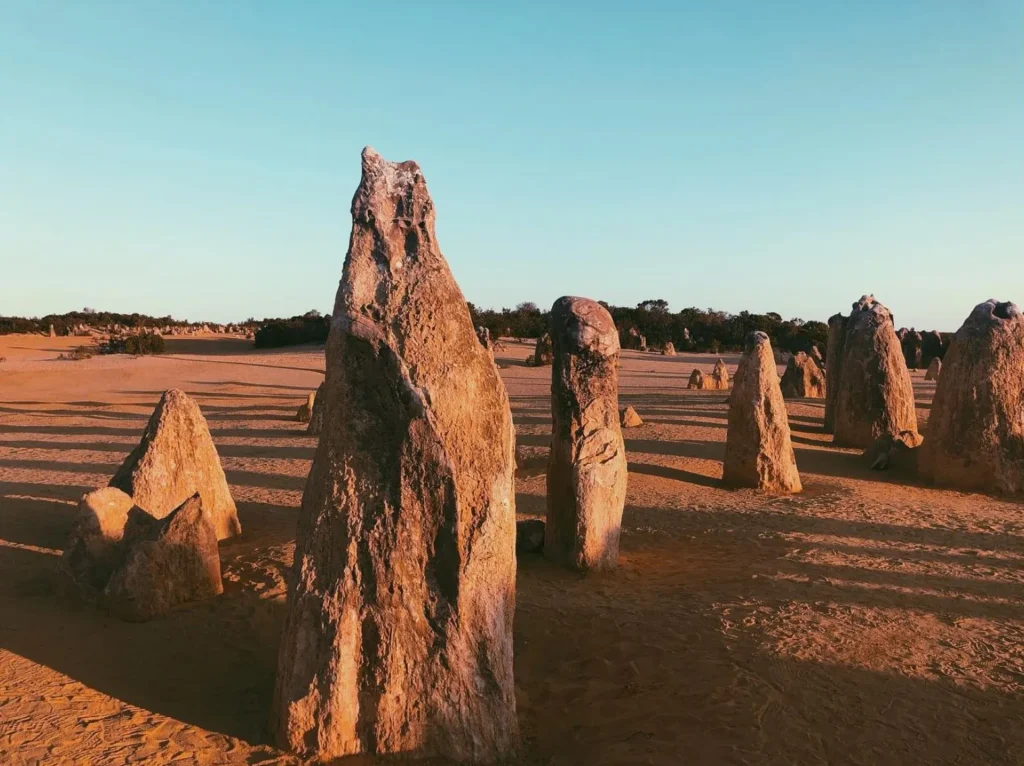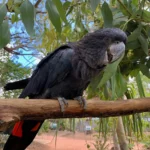The Pinnacles, within Nambung National Park in Western Australia, are one of the state’s most popular and unique attractions. This alien landscape of yellow sand and limestone pillars attracts visitors from all over the world. Located along the scenic Indian Ocean Drive on the Coral Coast, the Pinnacles is a mix of natural beauty, geology and culture. Whether you’re here for a Perth day tour or stargazing, this barren landscape will be unforgettable.
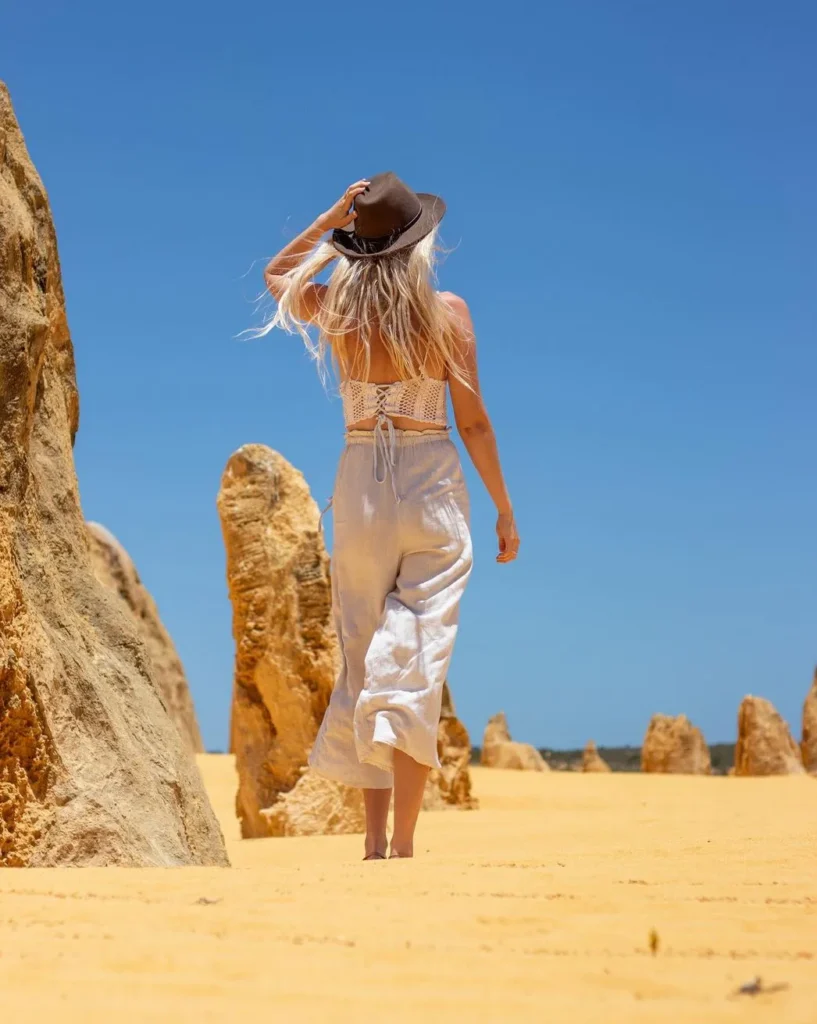
What are the Pinnacles?
The Pinnacles are thousands of limestone pillars, some over 3m tall, within the Pinnacles Desert. These natural limestone formations were created from ancient sea shells deposited around 25,000 to 30,000 years ago when the area was underwater. Over time wind, water and the desert floor movement sculpted these amazing geological formations.
This yellow sand landscape is a stark contrast to the Indian Ocean and the white sand dunes of the surrounding Coral Coast. The Pinnacles are not only a geological site but part of a larger desert ecosystem that’s home to native wildlife and seasonal wildflowers that bloom in spring and add a splash of colour to the golden sands.
Why Are the Pinnacles Famous?
1. Geological Features
The Pinnacles’ unique rock formations are the result of complex geological processes involving lime rich sands, calcium carbonate concretions and coastal winds erosion. The area has ancient limestone formed from marine shells millions of years ago. The solution pipes left behind have created these 3m high pinnacles, one of the most impressive landscapes in the world.
2. Cultural Importance
The Pinnacles have an active role in the cultural stories of the Indigenous people, particularly the Aboriginal Yued people, for whom the area is spiritually significant. They believe the Pinnacles were formed during traditional ceremonies in ancient times, adds to the magic of the natural wonder.
3. Accessibility and Location
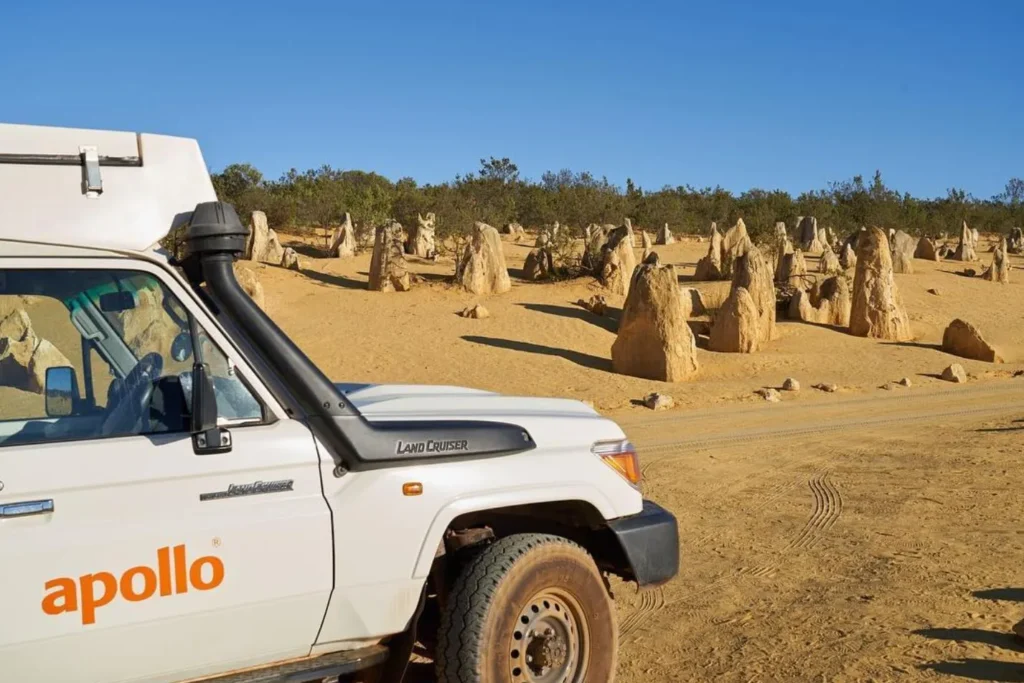
Only 1.5 to 2 hours from Perth along the Indian Ocean Drive, the Pinnacles are one of the most accessible natural wonders in the state. They are a great stop on a Coral Coast road trip. You can drive the Pinnacles Drive, a 4km loop road suitable for all vehicles including 2 wheel drive vehicles. So everyone can enjoy the Pinnacles regardless of age or fitness level.
4. Stargazing
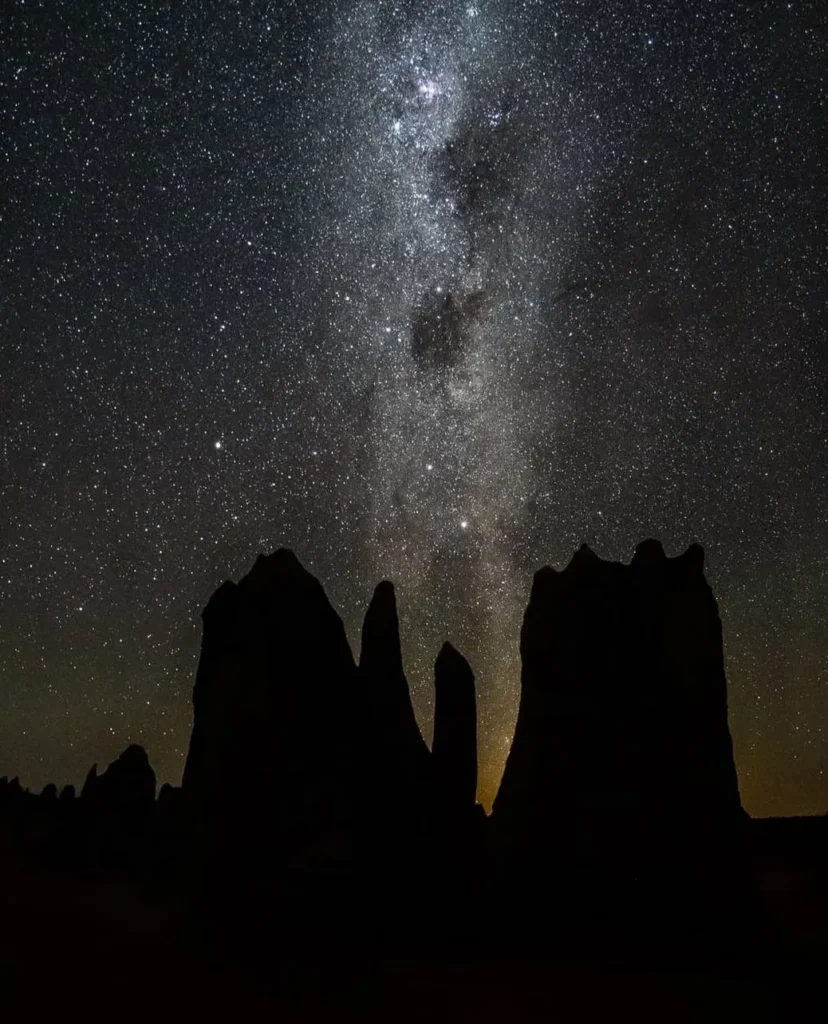
The Pinnacles Desert is part of Australia’s Dark Sky Reserve, one of the best places in the country to do stargazing. Free from light pollution the area has amazing views of the Milky Way, constellations and shooting stars. The limestone formations against the night sky is a photographer and astronomy enthusiasts dream.
Visitors often do a stargazing session in the evening as part of their Pinnacles tour, it’s a magical experience. Whether you’re an avid stargazer or just a curious traveller, the dark sky over the Pinnacles is a must see.
5. Wildlife and Ecosystem
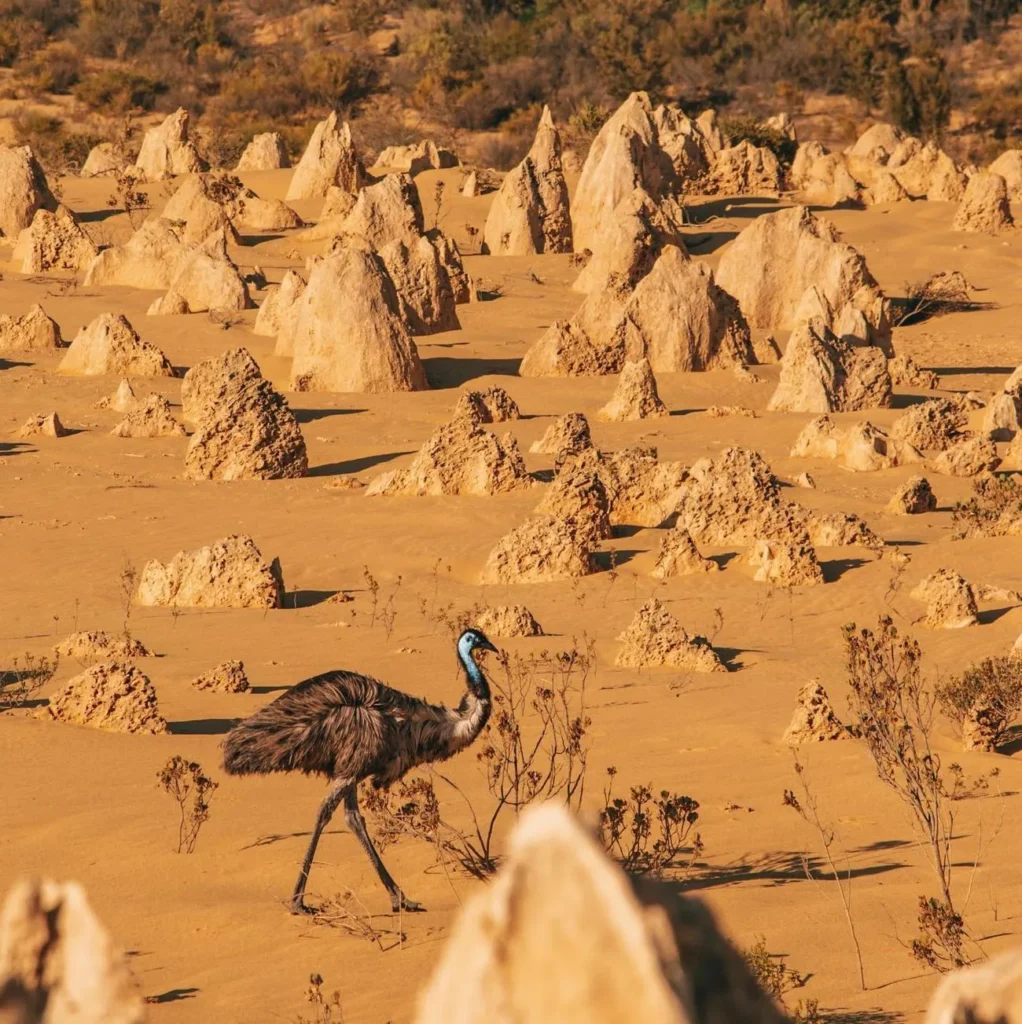
The Pinnacles Desert is home to many native animals including sand goannas, kangaroos, emus and black cockatoos. The desert sands support a variety of plant species that have adapted to the harsh conditions, creating a unique and vibrant ecosystem. In spring the golden sands are dotted with off-road, adding colour to the ancient landscape.
6. For Adventure Seekers

Adventure seekers can explore the mobile dunes, spot wildlife and discover nearby amazing beaches like Hangover Bay. The white sand dunes and coastal winds make it a hot spot for sandboarding and off-road adventures. Plus you can try fresh Western Rock Lobster from nearby Cervantes, the Pinnacles has it all for the thrill seekers.
Top Things to Do at the Pinnacles
Pinnacles Drive
4km loop track through the desert sands. 2WD. Panoramic views of the limestone formations and surrounding landscape.
Pinnacles Walking Trail
Get up close to the natural limestone. Desert View Walk takes you into the heart of the Pinnacle Desert where you can see ancient times frozen in these sandstone spires.
Pinnacles Desert Discovery Centre

Pinnacles Desert Discovery Centre is an information stop to learn about the region’s natural history, geology and Aboriginal history. Interactive displays explain how limestone, sedimentary rock and coastal winds formed the desert.
Surrounding Area
Stay longer and visit Hangover Bay, Hutt Lagoon and Yanchep National Park. These nearby attractions have swimming, picnicking and wildlife spotting (kangaroos and emus).
When to Visit?
You can visit the Pinnacles all year round but the best time depends on your preference. Spring (September to November) is the best time to see the wildflowers in bloom across the desert floor, summer evenings are great for sunset and stargazing, winter is cooler for daytime exploring and the late afternoon is the most popular time to visit as the golden light enhances the natural beauty of the Pinnacles.
Conclusion
The Pinnacles are one of Western Australia’s most natural wonders, a unique combination of geological history, Aboriginal culture and landscape. From the soft limestone to the desert ecosystem, every part of the Pinnacles is an experience. Whether you’re looking at ancient seashells turned to stone, taking a drive along the Indian Ocean or stargazing at a star filled sky, the Pinnacles will leave you with a lasting impression.
FAQ
What are the Pinnacles?
The Pinnacles Desert is a unique landscape in Nambung National Park with thousands of limestone pillars rising out of the yellow sand.
How were the Pinnacles formed?
The Pinnacles were formed from seashell fragments which solidified into limestone. Over time wind and geological processes shaped the limestone into the formations we see today.
What wildlife can be seen?
Native wildlife includes kangaroos, emus, sand goannas and seasonal birds. Wildflowers in spring.
Is the Pinnacles Drive 4WD?
No, the Pinnacles Drive is a 4km loop track 2WD. All visitors can access the desert.
What else is nearby?
Hangover Bay, Hutt Lagoon, Yanchep National Park, Cervantes (Western Rock Lobster and beaches)
